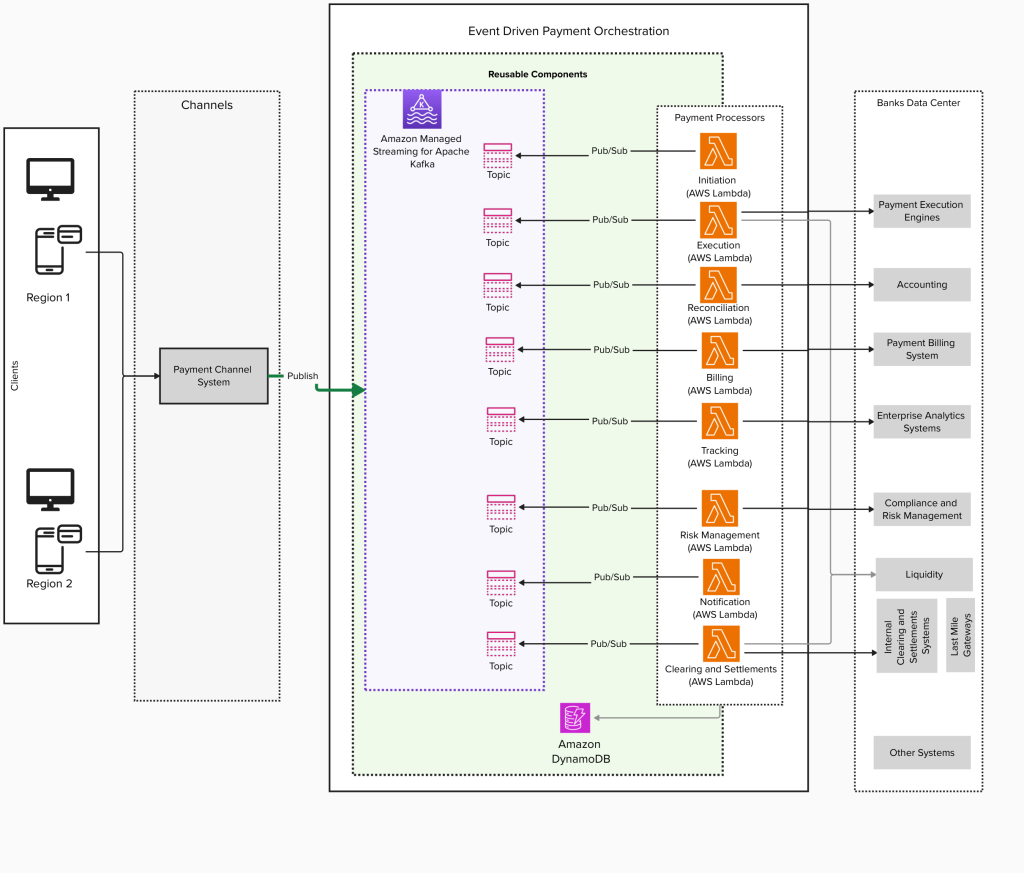AWS Architecture Blog
Category: Amazon CloudFront
Modernization of real-time payment orchestration on AWS
The global real-time payments market is experiencing significant growth. According to Fortune Business Insights, the market was valued at USD 24.91 billion in 2024 and is projected to grow to USD 284.49 billion by 2032, with a CAGR of 35.4%. Similarly, Grand View Research reports that the global mobile payment market, valued at USD 88.50 […]
How UNiDAYS achieved AWS Region expansion in 3 weeks
In this post, we share how UNiDAYS achieved AWS Region expansion in just 3 weeks using AWS services.
Top Architecture Blog Posts of 2024
Well, it’s been another historic year! We’ve watched in awe as the use of real-world generative AI has changed the tech landscape, and while we at the Architecture Blog happily participated, we also made every effort to stay true to our channel’s original scope, and your readership this last year has proven that decision was […]
Deploy Stable Diffusion ComfyUI on AWS elastically and efficiently
Introduction ComfyUI is an open-source node-based workflow solution for Stable Diffusion. It offers the following advantages: Significant performance optimization for SDXL model inference High customizability, allowing users granular control Portable workflows that can be shared easily Developer-friendly Due to these advantages, ComfyUI is increasingly being used by artistic creators. In this post, we will introduce […]
Top Architecture Blog Posts of 2023
2023 was a rollercoaster year in tech, and we at the AWS Architecture Blog feel so fortunate to have shared in the excitement. As we move into 2024 and all of the new technologies we could see, we want to take a moment to highlight the brightest stars from 2023. As always, thanks to our […]
Build a serverless retail solution for endless aisle on AWS
In traditional business models, retailers handle order-fulfillment processes from start to finish—including inventory management, owning or leasing warehouses, and managing supply chains. But many retailers aren’t set up to carry additional inventory. The “endless aisle” business model is an alternative solution for lean retailers that are carrying enough in-store inventory while wanting to avoid revenue […]
IBM Consulting creates innovative AWS solutions in French Hackathon
In March 2023, IBM Consulting delivered an Innovation Hackathon in France, aimed at designing and building new innovative solutions for real customer use cases using the AWS Cloud. In this post, we briefly explore six of the solutions considered and demonstrate the AWS architectures created and implemented during the Hackathon. Hackathon solutions Solution 1: Optimize […]
dApp authentication with Amazon Cognito and Web3 proxy with Amazon API Gateway
If your decentralized application (dApp) must interact directly with AWS services like Amazon S3 or Amazon API Gateway, you must authorize your users by granting them temporary AWS credentials. This solution uses Amazon Cognito in combination with your users’ digital wallet to obtain valid Amazon Cognito identities and temporary AWS credentials for your users. It […]
Mitigating DDoS with data science using AWS Shield Advanced and AWS WAF
This blog post helps customers in mitigating distributed denial-of-service (DDoS) using AWS Shield Advanced, AWS WAF, and data science. We explore how to use these services along with machine learning (ML) to detect and mitigate DDoS attacks. Bad actors conduct DDoS attacks using botnets. Through botnets, attackers look for zero-day vulnerabilities—specifically on network devices such […]
Sequence Diagrams enrich your understanding of distributed architectures
Architecture diagrams visually communicate and document the high-level design of a solution. As the level of detail increases, so does the diagram’s size, density, and layout complexity. Using Sequence Diagrams, you can explore additional usage scenarios and enrich your understanding of the distributed architecture while continuing to communicate visually. This post takes a sample architecture […]









